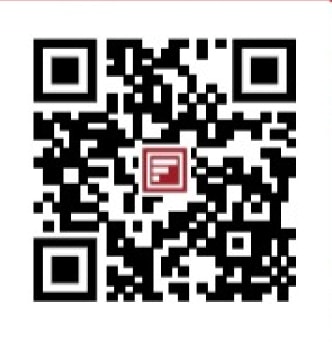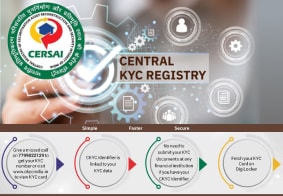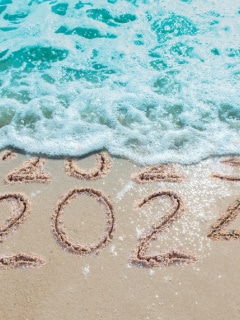CKYC Registry
-
Customer Service Contact us Service request Locate a branch
Find all the help you need
Scan the QR, get our app, and find help on your fingertips

Help CenterSupport topics, Contact us, FAQs and more
-
Login
Are you ready for an upgrade?
Login to the new experience with best features and services
-
Login
Are you ready for an upgrade?
Login to the new experience with best features and services
- Accounts
-
Deposits
IDFC FIRST Bank Deposits
View all Deposits -
Loans
IDFC FIRST Bank Loans
View all Loans - Wealth & Insure
-
Payments
IDFC FIRST Bank Payments
View all Payments -
Cards
IDFC FIRST Bank Cards
View all Cards - Blogs
- Corporate Account
-
Cash Management Services
IDFC FIRST Bank Cash Management Services
View all Cash Management Services - Supply Chain Finance
-
Corporate Lending
IDFC FIRST Bank Lending
View all -
Treasury
IDFC FIRST Bank Treasury
See more details - NBFC Financing
Support topics, Contact us, FAQs and more
- IDFC FIRST Bank Accounts
-
Savings Account
-
Corporate Salary
Account -
Senior Citizens
Savings Account -
First Power
Account -
Current Account
-
NRI Savings
Account -
TASC Institutional
Account -
Savings Account
Interest Calculator
- IDFC FIRST Bank Deposits
-
Fixed Deposit
-
Recurring Deposit
-
NRI Fixed Deposit
-
Safe Deposit Locker
-
FD Calculator
-
RD Calculator
- IDFC FIRST Bank Loans
-
Personal Loan
-
Consumer Durable
Loan -
Home Loan
-
Business Loan
-
Professional Loan
-
Education Loan
-
New Car Loan
-
Pre-owned Car Loan
-
Two Wheeler Loan
-
Pre-owned Two
Wheeler Loan -
Commercial Vehicle
Loan -
Gold Loan
-
Loan Against Property
-
Loan Against Securities
-
Easy Buy EMI card
-
Personal Loan
EMI Calculator -
Education Loan
EMI Calculator -
Home Loan
EMI Calculator
- IDFC FIRST Bank Wealth & Insure
-
FIRST Select
-
FIRST Wealth
-
FIRST Private
-
Mutual Funds
-
Sovereign Gold Bond
-
Demat Account
-
Term Insurance
-
Life Insurance
-
Health Insurance
-
General Insurance
-
Bonds
-
Loan Against
Securities -
Portfolio Management
Service
- IDFC FIRST Bank Payments
-
FASTag
-
Credit Card
Bill Payments -
UPI
-
Funds Transfer
-
Forex Services
-
Pay Loan EMI
- IDFC FIRST Bank Cards
-
Ashva :
Metal Credit Card -
Mayura :
Metal Credit Card -
FIRST Millennia
Credit Card -
FIRST Classic
Credit Card -
FIRST Select
Credit Card -
FIRST Wealth
Credit Card -
FIRST WOW!
Credit Card -
Deals
-
Debit Cards
-
Co-branded Cards
-
Credit Card
EMI Calculator -
FIRST Corporate
Credit Card -
FIRST Purchase
Credit Card -
FIRST Business
Credit Card
- Premium Metal Credit Cards
-
AshvaLifestyle1% Forex₹2,999
-
MayuraLifestyleZero Forex₹5,999
-
FIRST PrivateInvite Only
- Best for travellers
-
MayuraZero ForexMetal₹5,999
-
Ashva1% ForexMetal₹2,999
-
FIRST WOW!Zero ForexTravelLifetime Free
-
FIRST SWYPTravel OffersEMI₹499
-
FIRST Select1.99% ForexLifestyleLifetime Free
-
FIRST Wealth1.5% ForexLifestyleLifetime Free
-
Club VistaraTravelLifestyle₹4,999
-
IndiGo IDFC FIRST Dual Credit CardTravelLifestyle₹4,999
- Max benefits, Free for life
-
FIRST Classic10X RewardsShoppingNever Expiring Rewards
-
FIRST Millennia10X RewardsShoppingNever Expiring Rewards
-
FIRST Select10X RewardsLifestyle1.99% Forex
-
FIRST Wealth10X RewardsLifestyle1.5% Forex
-
FIRST WOW!RewardsTravelZero Forex
-
LIC ClassicRewardsInsuranceShopping
-
LIC SelectRewardsInsuranceShopping
- Reward Multipliers
-
AshvaLifestyleMetal₹2,999
-
MayuraLifestyleZero Forex₹5,999
-
FIRST ClassicNever Expiring RewardsShoppingLifetime Free
-
FIRST MillenniaNever Expiring RewardsShoppingLifetime Free
-
FIRST SelectNever Expiring RewardsLifestyleLifetime Free
-
FIRST WealthNever Expiring RewardsLifestyleLifetime Free
- Rewards & Credit on UPI
-
FIRST Power+FuelUPI₹499
-
FIRST PowerFuelUPI₹199
-
FIRST EA₹NVirtual1% Cashback₹499
-
FIRST DigitalVirtualUPI₹199
-
IndiGo IDFC FIRST Dual Credit CardUPITravelDual cards
- Fuel and Savings
-
FIRST PowerRewardsUPI₹199
-
FIRST Power+RewardsUPI₹499
-
LIC ClassicRewardsInsuranceShopping
-
LIC SelectRewardsInsuranceShopping
- Express and Flaunt
-
AshvaMetal1% Forex₹2,999
-
MayuraMetalZero Forex₹5,999
-
FIRST SWYPEMIOfferMAX₹499
-
FIRST MillenniaRewardsShoppingLifetime Free
- FD Backed rewarding Credit Cards for all
-
FIRST EA₹NVirtualCashback₹499
-
FIRST WOW!Zero ForexTravelLifetime Free
-
CreditPro Balance TransferTransfer & SaveReduce InterestPay Smartly
- IDFC FIRST Bank NRI Forex Solutions
-
Send money to India-Wire transfer
-
Send money to India-Digitally
-
Send money abroad
-
Max Returns FD (INR)
- IDFC FIRST Bank MSME Accounts
-
Platinum Current
Account -
Gold
Current Account -
Silver Plus
Current Account -
Merchant Multiplier
Account -
Agri Multiplier
Account -
TASC Institutional
Account -
Dynamic Current
Account -
World business
Account -
First Startup
Current Account
- IDFC FIRST Bank Business Loans
-
Business Loan
-
Professional Loan
-
Loan Against Property
-
Business Loan for Women
-
Working Capital Loan
-
Construction Equipment Loan
-
Machinery Loan
-
Healthcare Equipment Loan
- IDFC FIRST Bank Business Solutions
-
Payment Solutions
-
Tax Payments
-
Doorstep Banking
-
Point of Sale (POS)
-
Escrow Accounts
-
NACH
-
Payment Gateway
-
UPI
-
Virtual Accounts
-
As per amendment in the Income Tax Rules, PAN or Aadhaar are to be mandatorily quoted for cash deposit or withdrawal aggregating to Rupees twenty lakhs or more in a FY. Please update your PAN or Aadhaar. Kindly reach out to the Bank’s contact center on 1800 10 888 or visit the nearest IDFC FIRST Bank branch for further queries.
-
-
Most Searched
Sorry!
We couldn’t find ‘’ in our website
Here is what you can do :
- Try checking the spelling and search
- Search from below suggestions instead
- Widen your search & try a more generic keyword
Suggested
Get a Credit Card
Enjoy Zero Charges on All Commonly Used Savings Account Services
Open Account Now
Savings Account
How to fill a self cheque: Simple steps to avoid errors
Key Takeaways
A self-cheque allows you to withdraw cash or transfer funds between accounts.
Learning how to fill out a self-cheque is quite straightforward; you need to ensure all the details are entered correctly on the leaf of the cheque.
IDFC FIRST Bank offers convenient access to chequebooks for their savings account holders, enabling easy use of self-cheques for quick and secure cash withdrawals.
Many people rely on online or mobile banking to transfer money. However, digital payment systems have their limitations. For example, what if the recipient does not accept electronic payments? What if you urgently need cash but do not have your debit card? Similarly, ATMs could be unavailable, or your internet connection might fail. Situations like these highlight the need for an alternative solution.
In such scenarios, a traditional self-cheque can be a reliable option. It allows you to conveniently withdraw or transfer money, even when modern digital methods are inaccessible. Let’s explore how to fill a self-cheque to handle these circumstances.
READ MORE
What is a self-cheque?
A self-cheque is an instrument drawn by an account holder to themselves. Here, you are both the drawer and payee. The primary purpose of a self-cheque is to withdraw money directly from your bank account. It can also be used to transfer funds between your accounts under the same name. Here,
For example, if Mr. Bhushan wanted to withdraw a large sum that was beyond the ATM withdrawal limits, he could use a self-cheque. He could write a cheque with ‘Self’ as the payee, present it at IDFC FIRST Bank, and withdraw the cash.
How to fill a cheque for self-withdrawal
Here is a step-by-step guide on how to fill a cheque for self
1. Step 1 – Write the date.
Start by entering the current date in the ‘Date’ field at the top-right corner of the cheque. Use the DD/MM/YYYY format to avoid ambiguity. Your cheque will be valid for three months from this date.
2. Step 2 – Mention the payee’s name.
Below the dar, in the ‘Pay’ or ‘Pay to the Order of’ field, write the word ‘Self.’ Alternatively, you can write your full name as it appears in your bank account. This indicates that the cheque is payable to you.
3. Step 3 – Enter the amount in figures.
In the box next to the ₹ symbol, write the amount you wish to withdraw in numbers. Ensure you enter the exact amount to avoid discrepancies.
4. Step 4 – Enter the amount in words.
Below the payee’s name, write the same amount in words. For example, if the amount is ₹10,000, write ‘Ten Thousand Rupees Only.’ This step provides additional security against tampering.
5. Step 5 – Sign the cheque.
At the bottom-right corner of the cheque, sign it using the signature registered with your bank. This validates the cheque and authorises the bank to process it.
6. Step 6 – Present the cheque to the bank.
Now that you understand how to fill out a self-cheque, the next step is to visit your bank’s branch. Present the completed cheque to the teller, who will process the transaction.
Self-cheque – How to fill them correctly and avoid common errors
While writing a self-cheque, avoid these common mistakes –
1. Incorrect date
When writing a cheque, always use the current date. The bank may refuse an outdated or postdated cheque.
2. Missing or incorrect signature
Sign the cheque clearly and with your usual signature.
3. Spelling errors
Ensure the payee's name (your name) is spelled correctly.
4. Amount discrepancy
The amount written in figures must match the amount written in words exactly.
5. Writing over or erasing
Avoid writing over or erasing any information on the cheque. If you make a mistake, it's best to discard the check and start over.
The role of a self-cheque in personal finance
Though simple, learning how to fill a self-cheque and using one can have some financial benefits –
1. Personal record
As reliance on bank balances grows and cash transactions decrease, a self-cheque serves as a physical record of your withdrawal. It helps you track your expenses and manage your budget.
2. Easy access to cash
Self-cheques provide a convenient way to withdraw cash, especially in situations where ATMs are not readily available or when you need a large sum of money.
3. No transaction fees
Unlike using ATMs, where you might be charged a fee, cashing your self-cheque at your own bank does not incur additional charges.
Moreover, if you are banking with IDFC FIRST Banking, you are in for a delightful experience. The bank offers zero-fee banking on over thirty common savings account services, including chequebook re-issuance charges. Plus, with IDFC FIRST Bank Savings Accounts, you can redefine your personal finance with these features –
- Higher interest rates of up to 7.00% p.a. with monthly interest credits
- Higher purchase limit of up to ₹6 lakhs and ATM withdrawal limit of up to ₹2 lakhs (available with ₹25,000 AMB variant)
- Digital account opening
- Complimentary debit card
- User-friendly mobile banking app
- Complimentary personal and air accident insurance
- Unlimited free ATM transactions
The bottom line
Knowing how to fill a self-cheque can be an important skill in emergencies. The steps outlined above can help you confidently write a cheque for cash withdrawal or fund transfer.
Ready to experience hassle-free banking? Explore IDFC FIRST Bank Savings Account today and discover how to request chequebooks easily. Learn more about various banking services that can make financial transactions seamless and secure.
Disclaimer
The contents of this article/infographic/picture/video are meant solely for information purposes. The contents are generic in nature and for informational purposes only. It is not a substitute for specific advice in your own circumstances. The information is subject to updation, completion, revision, verification and amendment and the same may change materially. The information is not intended for distribution or use by any person in any jurisdiction where such distribution or use would be contrary to law or regulation or would subject IDFC FIRST Bank or its affiliates to any licensing or registration requirements. IDFC FIRST Bank shall not be responsible for any direct/indirect loss or liability incurred by the reader for taking any financial decisions based on the contents and information mentioned. Please consult your financial advisor before making any financial decision.
The features, benefits and offers mentioned in the article are applicable as on the day of publication of this blog and is subject to change without notice. The contents herein are also subject to other product specific terms and conditions and any third party terms and conditions, as applicable. Please refer our website www.idfcfirstbank.com for latest updates.























